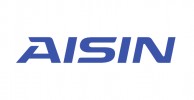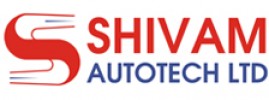Filter interviews by
Kml Mouldings Interview Questions and Answers
Kml Mouldings Interview Experiences
4 interviews found
(2 Questions)
- Q1. Be confident and describe yourself in detail
- Q2. Maruti Suzuki Customer experience is must
Interview Preparation Tips
Manager Interview Questions asked at other Companies
I applied via Walk-in and was interviewed in Jan 2024. There was 1 interview round.
(2 Questions)
- Q1. Anything interview question
- Q2. About your self question
Computer Operator Interview Questions asked at other Companies
I applied via Company Website
(5 Questions)
- Q1. What is this ?. injection molding.and what is processe
- Ans.
Injection molding is a manufacturing process used to produce parts by injecting molten material into a mold.
Molten material is injected into a mold cavity
The material cools and solidifies, taking the shape of the mold
Commonly used for producing plastic parts
Can also be used for producing metal, glass, and ceramic parts
- Q2. What is the back pressure
- Ans.
Back pressure is the resistance to the flow of molten plastic in the injection moulding machine.
It is the pressure exerted by the machine's screw on the molten plastic.
It helps to ensure that the plastic is properly melted and mixed.
Too much back pressure can cause the plastic to degrade or burn.
It is measured in pounds per square inch (PSI).
- Q3. What is the. suck buck
- Ans.
There is no such term as 'suck buck' in injection moulding. It may be a mispronunciation or a term used in a different industry.
There is no known term in injection moulding called 'suck buck'
It may be a mispronunciation of a different term
It could be a term used in a different industry altogether
- Q4. What is the .short molding
- Ans.
Short molding is a process where the plastic material is injected into the mold cavity for a shorter duration than usual.
Short molding is used to produce smaller parts with faster cycle times.
It requires precise control of the injection speed and pressure.
Short molding can result in lower part quality if not done correctly.
Examples of short molding applications include electronic components and medical devices.
- Q5. What is the full form PP.materil and melting point lower and uppar
- Ans.
PP material stands for Polypropylene. Its melting point ranges from 130°C to 171°C.
PP is a thermoplastic polymer widely used in injection moulding.
It has a low density and high stiffness, making it ideal for packaging and automotive industries.
The melting point of PP varies depending on the grade and can range from 130°C to 171°C.
PP is resistant to chemicals and has good electrical insulation properties.
Examples of PP ...
(3 Questions)
- Q1. What is the .ABS Full forme and melting point lower than uppar
- Ans.
ABS stands for Acrylonitrile Butadiene Styrene. Its melting point is lower than its upper limit.
ABS is a thermoplastic polymer commonly used in injection moulding.
It is known for its toughness, rigidity, and resistance to impact.
The melting point of ABS is typically around 105-110°C, which is lower than its upper limit of around 220°C.
ABS is commonly used in the production of automotive parts, toys, and electronic hous
- Q2. What is this senck Mark and cute mark
- Ans.
Sink mark and gate mark are common defects in injection moulding.
Sink mark is a depression on the surface of the moulded part caused by uneven cooling or insufficient packing pressure.
Gate mark is a small protrusion or indentation at the point where the plastic enters the mould, caused by the gate being removed from the part.
Both defects can be minimized by adjusting the moulding parameters, such as cooling time and pa...
- Q3. What is.5s and 6s Shop floor used
- Ans.
5S and 6S are lean manufacturing methodologies used to organize and maintain a clean and efficient workplace.
5S focuses on workplace organization and standardization of processes to improve efficiency and reduce waste.
6S adds safety as a sixth element to 5S, emphasizing the importance of a safe work environment.
Both methodologies involve regular audits and continuous improvement to maintain a high level of organization...
Interview Preparation Tips
Skills evaluated in this interview
Top Kml Mouldings Injection Moulding Operator Interview Questions and Answers
Injection Moulding Operator Interview Questions asked at other Companies
I applied via Campus Placement and was interviewed in Sep 2021. There was 1 interview round.
Interview Questionnaire
1 Question
- Q1. Molding , injection process, Extrusion process and other questions
Interview Preparation Tips
My department is molding and toolroom
OET Interview Questions asked at other Companies
Kml Mouldings interview questions for popular designations
Top trending discussions






Interview questions from similar companies

I applied via Recruitment Consulltant and was interviewed before Apr 2021. There were 3 interview rounds.

(7 Questions)
- Q1. What are your salary expectations?
- Q2. What is your family background?
- Q3. Share details of your previous job.
- Q4. Why should we hire you?
- Q5. Why are you looking for a change?
- Q6. What are your strengths and weaknesses?
- Q7. Tell me about yourself.
(2 Questions)
- Q1. As per your current profile
- Q2. Japanise Methodology like 4 M change, 5 S, IATF, OSASH, Safety, TPM, etc.
Interview Preparation Tips
salary no bar for good condidate,
answer all questions honesty because they are collect all information from your given details.

Senior Engineer Interview Questions & Answers
Aisin Automotive Haryanaposted on 15 Oct 2023
I applied via Recruitment Consulltant and was interviewed in Jun 2023. There were 7 interview rounds.

Share knowledge about past experience
Written test, reasoning, mathematics and coding test
(2 Questions)
- Q1. Technical questions about motor , electrical knowledge and electrical circuit basic or knowledge about course
- Q2. Different type motor and definition or electrical power knowledge
(1 Question)
- Q1. PLC logic create and discuss knowledge about PLC only
(1 Question)
- Q1. Discussed about self and i share my past experience
(1 Question)
- Q1. Salary discussion
Interview Preparation Tips

Senior Engineer Interview Questions & Answers
Aisin Automotive Haryanaposted on 7 Aug 2024
I applied via Naukri.com and was interviewed before Aug 2023. There was 1 interview round.
There are vav based questions and answers
Interview Preparation Tips

Assistant Manager Interview Questions & Answers
Aisin Automotive Haryanaposted on 11 May 2023
I applied via Campus Placement
(3 Questions)
- Q1. Directly meet me for interview
- Q2. No questions directly meet
- Q3. No questions in my mind
Interview Preparation Tips

I applied via Recruitment Consulltant and was interviewed before Jul 2023. There was 1 interview round.
(3 Questions)
- Q1. What are Iatf clauses
- Ans.
IATF clauses refer to specific requirements outlined in the International Automotive Task Force standards for automotive quality management systems.
IATF clauses are essential components of the quality management system for automotive companies.
They outline specific requirements that must be met in order to achieve IATF certification.
Examples of IATF clauses include requirements for leadership commitment, risk managemen...
- Q2. Insert terminology
- Q3. Mcodes g codes of cnc
- Ans.
M codes and G codes are commands used in CNC machines to control various functions and operations.
M codes are used for miscellaneous functions like stopping the machine or changing tools.
G codes are used for specific movements and operations like cutting, drilling, or milling.
Examples of M codes: M00 (program stop), M06 (tool change), M30 (end of program)
Examples of G codes: G00 (rapid positioning), G01 (linear interpo
Interview Preparation Tips

I applied via Company Website and was interviewed before Oct 2022. There were 4 interview rounds.

It was a easy round asked apti only
It was Easy-medium type round
(5 Questions)
- Q1. Last round asked hr and technical questions
- Q2. Asked DSA question
- Q3. Tell me about yourself
- Q4. Where do you want to see yourself after 5 years ?
- Q5. Why should I hire you ?
Interview Preparation Tips
Kml Mouldings Interview FAQs
Tell us how to improve this page.
Kml Mouldings Interviews By Designations
Interview Questions for Popular Designations
Kml Mouldings Interview Process
based on 5 interviews
Interview experience
Interview Questions from Similar Companies
Kml Mouldings Reviews and Ratings
based on 31 reviews
Rating in categories
|
OET
19
salaries
| ₹1.7 L/yr - ₹2.5 L/yr |
|
Senior Engineer
10
salaries
| ₹4.7 L/yr - ₹6.7 L/yr |
|
Junior Engineer
7
salaries
| ₹2.2 L/yr - ₹3.6 L/yr |
|
Trainee Operating Engineer
6
salaries
| ₹1.8 L/yr - ₹2.2 L/yr |
|
Diploma Trainee Engineer
6
salaries
| ₹1.7 L/yr - ₹2 L/yr |

Knorr-Bremse

Greaves Cotton

Sanden Vikas

Victora Auto Private Limited
- Home >
- Interviews >
- Kml Mouldings Interview Questions









